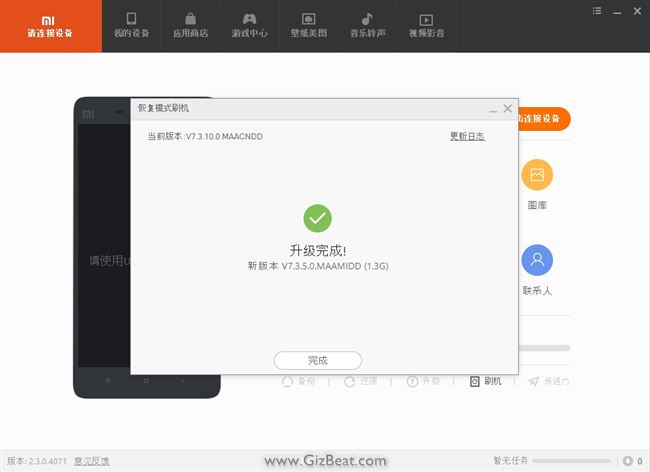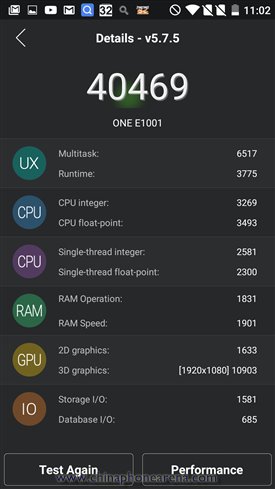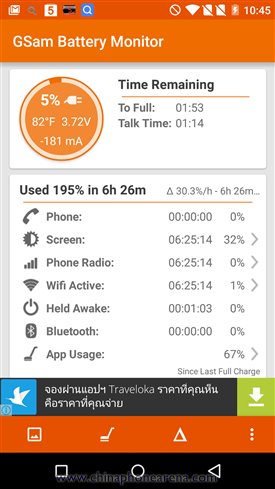If you’re not yet convinced the latest trend in smartphone marketing, dual rear cameras, is a legitimate and useful technology, Qualcomm has entered the fray to help give clout towards making you a believer. (more…)
Category: Qualcomm
-

Kirin 950 vs Snapdragon 820 Geekbench 4 has finally arrived
It seems like forever since Primate Labs has released a new version of their quick, effortless benchmarking software. Finally the day has come and Geekbench 4 is here. (more…)
-

Xiaomi Mi5 unbrick after bricked from failed edl flash method 2
Many users have bricked their Xiaomi Mi5. This unbrick Xiaomi Mi5 guide has helped many users come back from a Xiaomi Mi5 brick, even with a locked bootloader. (more…)
-

Change to Global Xiaomi Mi5 ROM from 7.2.8.0 or CN ROM and unbrick Xiaomi Mi5 bricked from edl flash
This guide / tutorial / how-to will help you flash upgrade Xiaomi Mi5 7.2.8.0 vendor, or 7.3.2.0 / 7.3.3.0 / 7.3.4.0 / 7.3.10.0 China ROM, to Xiaomi Mi5 Global Stable ROM 7.3.5.0 or to Xiaomi Mi5 Global Developer ROM 6.5.3.0. The beautiful part is that you don’t even need an unlocked boot loader.
This Xiaomi Mi5 guide will actually help you flash to any SD update ROM. So if for some reason you want to go to the latest Xiaomi Mi5 China ROM or Xiaomi Mi5 China Developer ROM from Global or Vendor ROM, you can also use this guide.
This Xiaomi Flash tutorial guide should also help with any Xiaomi phone. It’s not limited only to Xiaomi Mi5.
Unbrick Xiaomi Mi5 no edl fastboot recovery locked bootloader
If you’re finding this Xiaomi Mi5 flash guide before you’ve bricked, you’re in luck. However, many people have arrived here due to being bricked from trying to flash Xiaomi Mi5 with a locked bootloader in edl mode.
Many users have used this exact same tutorial to unbrick their locked bootloader Xiaomi Mi5 and Xiaomi Redmi Note 3 Pro. Particularly people who tried to flash Xiaomi Mi5 in edl mode. Xiaomi has disabled edl in later versions, but in earlier versions and the 7.2.8.0 vendor version it still exists. However, this guide has not worked for everyone to unbrick Xiaomi Mi5. We have another unbrick Xiaomi Mi5 tutorial coming up that should help you if this one fails.
1. Download Xiaomi Global ROM
The first step is to download your ROM of choice. That can be done here (opens in new tab): Official Xiaomi ROM Downloads
2. Download and run the latest China Xiaomi Mi PC Suite
Click here to download latest Mi Phone Suite Chinese version (direct download for Official Mi Xiaomi PC Phone Suite Installer). The installer is very small, only about 2MB. After downloading and running, make sure you allow any permissions it requests.
It will then download the latest Chinese language version of Mi PC Phone Suite, which is about 42MB total.
After downloading and installing, it will autorun. Let it go ahead and do that.
3. Prepare your phone
Don’t plug your Xiaomi mobile into the USB yet. Power down your phone if it’s not already powered down. Then hold VolumeUp+Power button. You will see the Mi Logo, then it should show a pic of your phone with a USB cable unplugged from it.
4. Select the download
Connect one end of the USB cable to your Xiaomi Mi5 mobile phone, then while holding SHIFT on your PC, plug the other end into your computer’s USB port.
You should then see a Windows explorer window popup. Direct it to your Xiaomi Mi5 ROM download from the previous step. This needs to be an SD update type ROM, *not* a fastboot type ROM.
Go ahead and select the previously downloaded ROM by double clicking it, or clicking it once then clicking “Open”.
5. The SD update ROM flash initializes

You will see a circle going round and round. After 10-30 seconds you should see your current ROM version come up in the upper-left hand corner of Mi PC Phone Suite. Then about 10-30 seconds later will see an approval button show up. This is all in Chinese, but more or less it’s asking if you’re sure you want to proceed. Go ahead and press the button.
6. The ROM flash

After initiating the Xiaomi Mi5 ROM flash, you will see the meter start at 50%. This is normal. After another 30 seconds or so you will also see a bar slowly start to make its way across the bottom of your Xiaomi Mi5 phone.
The bar will move very slowly. In our case, the bar on the PC remained at 50% until the bar on the phone hit about 65%, which was after about 15 minutes or so.
Once the bar on the phone hits about 65%, you should start to see the PC bar extremely slowly begin to creep upwards a fraction of a % at a time. The bar on the phone will hit 100% when the PC bar is far from finished.

When you see this message, or you see your phone has rebooted, you’re good to disconnect.
Possible error messages and problems
If you’re bricked and this didn’t work for you, give this tutorial a try.
It took us 6 tries before the flash finally went through successfully. Some people are lucky and get it on the first go. Others not so lucky. The trick here is perseverance.
The first issue we encountered was the Mi Phone Suite PC bar never went forward. It remained at 50% until well after the bar on the phone had hit 100%. Whether it would have actually completed regardless is unknown, however we decided to remove the USB cable and start the process over again. NOTE: this should not brick you. If you remove the cable before finished it will just stop, and your old ROM will still boot.
Whether it’s the bar not moving forward, or whether you’ve received an error message similar to the image below, the solution is to try try try again. This includes powering down the phone again and restarting the Xiaomi Mi PC Phone Suite.

Good luck! Should you have any issues, problems or concerns, or if this guide helped you out, let us know in the comments.
[toggle title=’How to share this Guide on a forum or blog. Click here’]
If you wish to share this guide on a blog, sharing the direct link to this GizBeat post is always best.If just a link won’t work for you, you may include the full or partial text, and images, in your blog or in a forum, but you must include the following:
In a blog:
Re-posted with permission from: <a href="http://www.gizbeat.com/10368/change-to-global-xiaomi-mi5-rom-from-7-2-8-0-or-cn-rom-and-unbrick-xiaomi-mi5-bricked-from-edl-flash/" target="_blank" rel="follow">GizBeat.com</a>
In a forum:
Re-posted with permission from: http://www.gizbeat.com/10368/change-to-global-xiaomi-mi5-rom-from-7-2-8-0-or-cn-rom-and-unbrick-xiaomi-mi5-bricked-from-edl-flash/
[/toggle]
Full Xiaomi Mi5 review here -

128gb AMOLED Zenfone 3 Deluxe vs 6.8″ display Zenfone 3 Ultra
Zenfone 3 is here at last, with some surprisingly unique specs. While it’s only been 16 months since the Zenfone 2 was first announced, this is an eternity in the world of mobiles, (more…)
-

MediaTek signs on for new ARM Cortex-A73
Much of the tech world is gearing up for Virtual Reality (VR) and ARM is no exception. Their next set of high-end mobile CPU Cortex tech will be Cortex-A73. (more…)
-

10 top mobiles. China phone Xiaomi Mi5 comes in 1st
Xiaomi along with Snapdragon 820 MSM8996 heralds the Mi5 as the most powerful consumer mobile in the universe. (more…)
-

Lenovo Zuk Z2 Pro Snapdragon 820 6GB RAM 128GB ROM coming
Zuk Z1 burst onto the scene last year with the premium specced Zuk Z1. They’re now set to break records with a megantic 6GB RAM and huge 128GB RAM built-in storage. (more…)
-

Xiaomi Redmi 3S vs Redmi 3 Mini preview
Xiaomi has taken a cue from Elephone and is now releasing new models about as fast as we can get them reviewed. The next new model up is the Redmi 3S aka Xiaomi Redmi 3 Pro. (more…)
-

3GB 1080P OnePlus X review OPX review
Review source (re-published here with permission from CPA)
Who are they: OnePlus jumped on the scene about a year back with their premium specced OnePlus One. This mobile shook things up with their marketing approach; by selling the phone through invite codes only, they generated huge buzz around their phone. Enough buzz that many common consumers, who knew nothing of China phones, ended up knowing the brand name.

Since their big release of the OnePlus One, they’ve also released the OnePlus Two and the more budget friendly OnePlus X.
OnePlus claims the OPX hits 50k+
The competition: In terms of competition sizewise and pricewise, the OnePlus X is pit against such phones as Xiaomi Mi4i, Xiaomi Mi4c, Sony Xperia M4, Samsung J7, Asus Zenfone 2, and Lenovo Vibe. These phones are all sitting in the $200-$300 range. Some of them offer a healthy boost in performance in comparison to the $100-200 budget mobiles; at least, according to Antutu. Speaking of Antutu, OnePlus claims the OPX hits 50k+ and we’ll see whether that claim is met later in the review.

I’ll also address whether stepping up into this price range and amount of power is worth it. Let’s get it on.
OnePlus X style and build
There’s no getting around this– the OnePlus X looks great; there’s the physical tri-state switch on the side ala iPhone 6, the sides/top/frame are CNC line-textured metal, and both the back and front are glass. It’s also super thin at 7.5mm. This is a phone designed from the outset to compete looks-wise with premium mobiles. It’s a phone that will have people looking at and saying wow.
The back being glass, the black version shows some fairly nasty fingerprints, but they do include a soft case, which I’m guessing many people will be protecting their phones with. Somewhat negates the cool glass back, but at least we have a choice whether to keep it clean (or not) and show it off, or put it in a case.

The white one doesn’t suffer from this. While of course it picks up fingerprints the same as black, they’re invisible unless looking closing at the right angle.
The SIM/TF SD slot is in the the side of the phone, and melds nearly seam-free excepting the tray release hole.
I’m of two minds regarding the 2.5D front glass. While it looks good, due to the curved edges, screen protectors can’t cover the entire area. I would prefer flat glass and a 2.5D glass screen protector, but this is a nitpick; the area that matters– the glass directly covering the LCD, is covered by the included screen protector.

The physical switch on the left side controls notification preference between silent (DND), vibrate, and sound. While this seems a bit of an “iPhone 6 me-too feature”, I think many people will find it useful to quickly switch it to silent before drifting to sleep.
there are no capacitive button lights
As has become the trend with many recently released mobiles, there are no capacitive button lights. A design decision by OnePlus that I applaud.
The packaging presentation of the OnePlus X is overall premium. In the box is a heavy-duty ribbon micro-USB cable, a 2A AC adapter, the SIM tray key, manual and a few other official type inserts from OnePlus.

The power buttons and volume buttons give tactile, audible clicks when pressed, and the side-switch feels sturdy and clicks surely into its three positions. Overall, the OnePlus X, despite its slim profile, feels solid and well built, partially owing to the glass back which gives it some additional heft.

OnePlus also opted to stick with standard micro-USB as opposed to USB-C / USB3.1. I like this decision, as no matter where you go, you’ll likely have an easy time finding a nearby compatible charger should you need it.
OnePlus X LCD
AMOLED type displays also offer true black
The display on the OnePlus X is AMOLED IPS OGS 5.0″@1080P, which gives us a retina PPI of 440. Being AMOLED, the display is beautiful, maintaining color and contrast from all angles; even the extreme diagonals maintain perfect color and contrast. OnePlus used a top-notch display for the OPX.

The AMOLED type displays also offer true black, which gives rich contrast, and when using dark themes can give us a nice step up in battery life.
At its brightest, the OPX reaches a Gizbeat record smashing 503 lux (1 lux = 1 candela/m2) when measuring a pure white background. At its dimmest, the OPX hits an excellent 4 lux, and with adaptive brightness enabled goes as low as 1 lux. This is excellent news for those of you who spend a lot of bed-time with your mobiles.
OnePlus X Antutu
As mentioned previously, OnePlus touts a 50k+ score for Antutu. Running the test 2x on Antutu 6, the OPX 46k+, while on Antutu 5, again ran 2x, the OPX scored 40k. Not hitting the 50k mark as touted by OnePlus, but it’s close enough and easily powerful enough to play modern games and offer a smooth 1080P Android experience.


OnePlus X GPS

GPS on the OnePlus X is great, cold-locking in seconds and maintaining high-30’s to low 40’s SNR at all times on multiple satellites.
OnePlus X review OS
The OS on the OnePlus X is dubbed Oxygen. In its current version, it varies little from AOSP; those of you used to vanilla Android Lollipop will feel right at home. There were a couple of official updates from OnePlus that installed without issue.

Fortunately, as opposed to having to press and hold the capacitive Home button, Oxygen is set so that we can give a single tap to the left or right capacitive button to access recent apps.
Thankfully OnePlus has given us a user unlockable bootloader right from get
There are also additional adjustments available to the capacitive buttons for long-pressing and double-tapping. One such option I really like is the “Open last used app”, which allows you to, for example, switch between Messenger and Chrome, or Chrome and the Calculator. Another I like is the “Turn off screen”; you will never have to use the physical power button if you combine this with “double-tap display to wake”. While these are extremely useful functions, it’s bizarre they didn’t include the ability to open an app, or access menu/settings with these actions.

Thankfully OnePlus has given us a user unlockable bootloader right from get. Just enable developer options by tapping “build number” multiple times, then in developer options toggle the bootloader unlock. Then in fastboot mode, type “fastboot oem unlock”. That’s it, ready to root and flash custom ROMs onto the OPX.

Unfortunate omissions from the current iteration of Oxygen:
- not possible to access Settings Main from Notification Pull-down or by tapping and holding the Menu Button, thus you must hunt down the settings shortcut every time you need it, or access it from Recents if its there
- no way to adjust display saturation or tone in the current ROM without installing a custom kernel
- no way to turn off the notification LED without rooting
While bizarre, these are not anywhere near deal-breakers, and the last two points can be addressed by flashing a custom kernel and/or rooting. These are also things that can easily be addressed by OnePlus in future ROM updates.
I did experience a couple of issues with the OS. One was UC Browser HD would not get past the opening agreement stage, continuously force-closing. A restart of the phone and clearing data did not solve the problem. This is not an issue for me, as I use Chrome, and “UC Browser – Fast Download” version worked without a problem.
The other issue was that when going to Facebook through Firefox, I was continuously pushed to LiveJournal.com directly after logging in. It was impossible to use Facebook through Firefox due to the issue.
These last two issues are very minor, but bear mentioning since I’ve not experienced this with any other mobile tested.

There will be many custom ROMs and a huge user base of support for the OnePlus X. There is already a stable CM12.1 CyanogenMod, beta CM13, Mokee, Pacman and several other custom ROMs available for the OnePlus X. While these aren’t currently official releases, they are well on their way.
After the cache and system have taken up their space, we’re left with about 10GB of free space for user storage. We can use a TF SD card in the OnePlus X to further expand storage, though at the expense of making the OPX single-SIM.

OnePlus X pictures image samples
There are several conflicting reports regarding the camera sensor in the OnePlus X. While some say it’s using Samsung ISOCELL, others are saying Sony IMX258. In our review unit, it comes up as Sony IMX258. Overall the camera and lens setup in the OPX produces good color and sharpness, with pictures easily good enough for digital sharing and up to medium prints.
Note these are non-HDR images, and are unedited other than crop and resize. The 600×400 images are 100% crops from the original 13MP images.
[flickr_set id=”72157663248369231″]
Here are a couple of low light shots taken with the OnePlus X. There is some fairly heavy artifacting, but overall they didn’t come out shabby at all. We can see that noise has been well cleaned up by the OnePlus camera app, and shown at typical digital sharing sizes, the difference between these and an expensive standalone compact won’t be seen unless it’s a very experienced eye or unless making big crops or pixel peeping.
See all OnePlus pictures and OPX IMX258 compared to other phones at Flickr
OnePlus X battery life test and battery charging
While 2450mAh isn’t considered a large amount of juice in comparison to some of its competitors, the OnePlus X did a great job on our battery tests. Running our standard video test of streaming YouTube through WiFi at 140 lux, the OnePlus X lasted a solid 6 hours on the first run, and 6 hours 25 minutes on the second run.

On the webpage refresh test with brightness set at the same 140 lux, the OnePlus did even better, hitting a great 7 hours on the first run, and an incredible [for a 2450mAh, 5.0″@1920 mobile] 7 hours 51 minutes on the 2nd run.

The OnePlus X charges fully in about 2 hours flat.

OnePlus X OS quick-notes:
- quick-flick rapid scrolling no problem
- very slow scrolling is butter smooth
- Google Play and Services working without issue and come as part of the stock OS
- transitions and animations are butter. As appropriate for such a powerful mobile, the OPX is pushing 1080P Android system without issue
- Recent Apps list comes up immediately when called
- switching between apps in memory is immediate
- apps are appropriately staying in memory, with apps 10 apps back / several hours later still bam sitting there ready to rock

OnePlus X other components:
- WiFi: excellent, reaches 130ft/40m from a $20 home router while remaining stable and at top speeds
- GPS: excellent, gains cold lock within seconds and maintains several satellites at low-40’s while the other connected satellites stay in the high-30’s. Indoors, the signal drops minutely, but maintains excellent SNR
- External speaker: very good. Loud and crisp sound. Higher volumes produce some distortion, but this will depend on the source as well. Beyond loud enough for music / movies / hands-free
- Compass: working without issue
- Gyroscope: working without issue

I’ve seen and read several other reviews of the OnePlus X, and they’ve ranged from [wow, great budget mobile, but some sacrifices need to be made in comparison to main brand flagships] to [not worth the money at $275, there are better choices in this price range]. These reviews were generally coming from people used to main brand mobiles; I think our point-of-view at Gizbeat is coming from an entirely different angle.
It should be noted that since the time of these reviews, the price has dropped some at many shops.
If you are coming from or considering a main brand flagship, these are some of the things you’ll give up if choosing the OPX:
- no NFC
- no QuickCharge
- no USB-C/3.1
For my use, and I’m guessing the majority of the public, these things won’t matter, or won’t significantly detract. The battery charges in about 2 hours, this is quick enough for me. I’ve never had a use for NFC and the USB-C/3.1 doesn’t have any practical use for mobiles other than rapid file transfers between USB-C/3.1 capable devices; though, this could be of benefit if you’re transferring huge files back and forth often.
It would be nice if we see OnePlus X add a stock option to turn off LED notifications and tune display to our liking, but these are just slight niggles.
deliberate crippling to have users who desire these top extras to step up into the more expensive model, and leave a very solid choice for those who don’t need all the bells and whistles and want to save a bit of dough.
We also need to remember that this is the OnePlus budget unit. If they’d included a top camera, bigger battery, NFC, QuickCharge, USB 3.1, then there would be no reason to step up into the OnePlus Two. This is a deliberate crippling to have users who desire these top extras to step up into the more expensive model, and leave a very solid choice for those who don’t need all the bells and whistles and want to save a bit of dough.

OnePlus isn’t going cheap charlie with the OPX though; they’ve given it incredible looks, TF SD expansion slot and a physical side switch.
OnePlus X root TWRP OPX root TWRP
Rooting the OnePlus X is not a problem. I’ve made a newbie friendly tutorial, along with a root package that includes auto-install adb drivers, adb command set, SuperSU and the TWRP for OnePlus X. Note this process is nearly the same for all modern phones with a bootloader / fastboot mode.
OnePlus X forum, how to install adb, TWRP, root, CyanogenMod 12.1
OnePlus X vs Mi4c battery test
Newbie Guide: How to use fastboot to flash TWRP
Conclusion Summary OnePlus X@Gearbest Consider Doogee F5 Mi4i 2GB/32GB Lenovo K3 Redmi 2 Pro Mlais MX Base - OS lacks some basic options
- WCDMA 850/1900 for Americans
- Great GPS SNR
- Great WiFi signal strength
- Very smooth OS
- Storage relegated to one partition
- Dual-SIM (*Dual-SIM or Single-SIM+TF SD)
- TF SD expandable*
- Solid build
- Slim, premium styling
- Very smooth slow-scrolling and quick flick rapid-scrolling no problem
- 4G capable (UK, Asia, Europe, Some Americas)
- Components all working without issue
- Good external speaker
- Apps appropriately staying in memory
- Good camera
- Has compass and gyroscope
- Tri-state physical switch for changing between notification states
Rating 
The OnePlus X has a lot going for it. A big user base of support, as well as custom ROMs, a near perfect display, decent battery life, excellent GPS and WiFi, a strong speaker and all other components working without issue. In addition, the phone is beautiful– a slim, compact, class act that will have your friends wanting to know “what” and “how much”.
Which is where we come to a crossroads; there are many phones now available that will offer the same amount of power at a significantly lower price point, for example the Lenovo K3 Note. There is also a huge selection of phones that might not score the same on benchmarks, but in terms of real world use will run Android as smoothly as the OPX. Some of these phones offer realworld advantages over the OPX such as battery life with the mega-battery mobiles.
Pricewise, I see OPX main competition being the Xiaomi Mi4C, but as of now the Mi4C is still only officially a China, so no official global multi-language ROM, no default gapps, no kernel source. Of course, depending on the user, the Mi4c detractors may matter little.
The Xiaomi Mi4i, another possible competitor is in the same price range ($200-300), but the Snapdragon 615 may leave a bit to be desired for some folks; it doesn’t quite run 1080P Android system animations as butter smooth as the SD8xx and MT6752/3 SoCs. The Mi4i and Mi4C also lack the benefit of TF SD expansion.
OnePlus X@Gearbest If the price is within your budget, the OnePlus X is a fantastic looking, compact, powerful phone that comes recommended by Gizbeat. It’s a mobile I wouldn’t have a problem recommending to a friend or family member. -

Snapdragon 801 OnePlus X preview
OnePlus jumped on the scene about a year back with their premium specced OnePlus One. This mobile shook things up a bit with their marketing approach; by selling the phone through invite codes only, they generated huge buzz around phone. Enough buzz in fact that many common consumers, who knew nothing of China phones, ended up knowing the brand name.

Up for preview today is the OnePlus X.
OnePlus X review specs specifications
- SoC: Snapdragon 801
- CPU: 4-core Krait [email protected]
- GPU: Adreno 330
- RAM: 2GB or 3GB (two different versions)
- ROM storage: 16GB
- Display: 2.5D Gorilla Glass protected IPS OGS 5.0″@1080P
- Front camera: 13MP
- Rear camera: 8MP
- TF SD expandable: Yes
- Dual-SIM: Yes
- OS: Oxygen over Android 5.1.1
- 2G: GSM 850/900/1800/1900MHz
- 3G: WCDMA 850/900/1900/2100MHz
- 4G: FDD-LTE 1800/2100/2600MHz
- Battery: 2450mAh built-in
This is an awesome time to be into China phones. A couple of months back, it seemed there was no end to the 5.5″ models, but recently we’ve seen a big surge towards 5.0″. As 4.7″/5.0″ is my preferred size, it’s great to see OnePlus releasing a more compact mobile.
Interestingly, they’ve gone with a design that allows for TF SD expansion up to 128GB. The two different versions are 2GB and 3GB, but beyond this are the exact same phone. The price difference between the two is only $10, so obviously we’re going to jump up to the 3GB version when purchasing. That being said, there’s little to no discernible difference between 2GB and 3GB to the average user, so if the gap gets wider than $15, I’d stick with the 2GB version.The Snapdragon 801 is one of Qualcomm’s flagship SoC and has enough bandwidth to easily push 1080P; we should see a very smooth Android experience with the OnePlus X. We also see the OnePlus X supports worldwide 3G, which is good news for N/C/S Americans.
OnePlus [email protected] Stylewise the OnePlus X is nice and square and carries the slightly edge-curved 2.5D Gorilla Glass.
If you’re looking for a compact mobile built by a strong up and comer known for creating very solid mobiles, consider the OnePlus X.
-

Xiaomi Mi4C review Snapdragon 808 1080P
Sold retail internationally, Xiaomi is one of the best known China brands. They rose to the top in a very short time period due to a huge bank roll and tons of smarts put towards marketing. Indeed, they are the #3 smartphone maker in the world preceded only by Samsung at #1 and Apple at #2. (more…)














